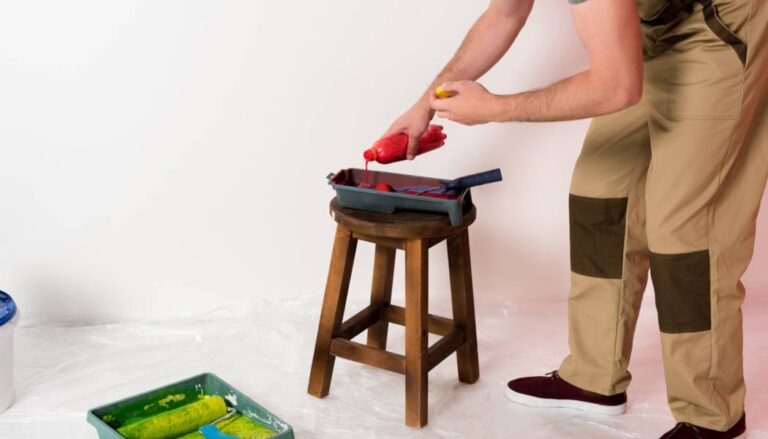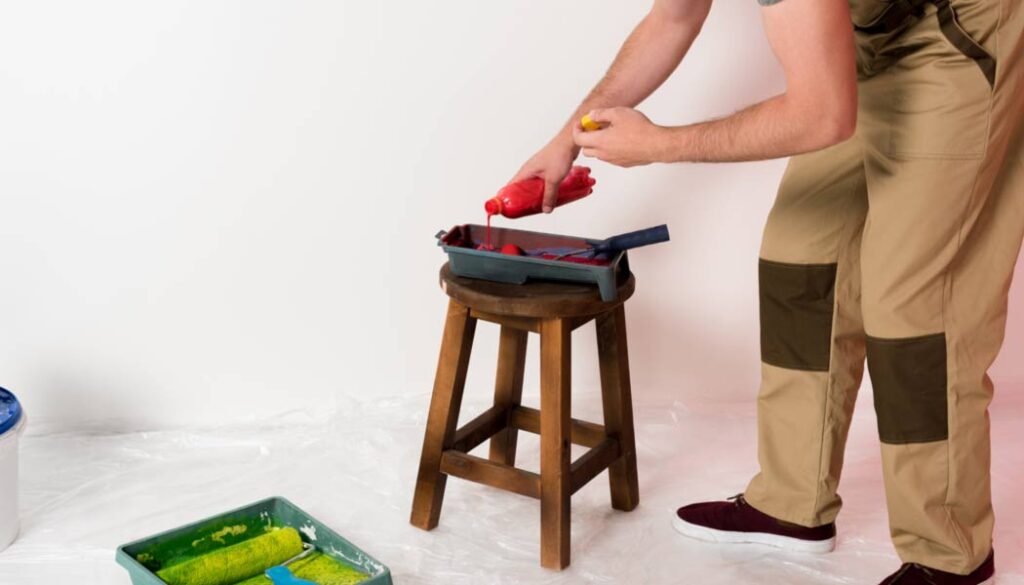
Can You Mix Water with Oil Based Stain?
No, you cannot mix water with oil-based stain because simply oil and water do not mix well.
We understand as a regular user of stain you may have to experience with them. Hence, you must wonder asking if you can mix water with an oil-based stain.
Though no one suggests mixing water with oil-based stain yet you can combine them. But for that, you have to make sure the previous coat is dry completely. However, there can be other ways to make it work if not mix the two ingredients directly.

Let’s make things clear regarding the topic in this article. Bear with us till the end.
Can Oil Based Stains Be Mixed?
Here, we need to understand that oil and stains are two different things. However, you can mix them together. Their properties will allow you to mix them. In other words, oil-based stain components include a binder property. The property is manufactured in a way that dries slowly. Therefore, you can mix different oil-based stains together and they will mix evenly.
However, as long as you want your signature mix of stains, you can follow a proper intermixing process. In the process, you can mix up to three oil-based stain colors together. The result will be a custom blend. However, the mixing process is somewhat easy. But you have to be a bit extra careful while adopting the mixing step.
Moreover, you also have to ensure that the colors you have chosen for mixing have an almost similar undertone. Therefore, for the experience, you can choose colors like cherry, oak, and maple together. These oil-based stain colors have similar types of undertones. That is why their intermixing will result in the desired shade.
Nonetheless, to mix up the stains, layering can be an option. Overlapping different coats of oil-based stains will add dimension and depth to your precious woos piece of furniture. Moreover, to make the mixture proper, take several cups for respective stains and then pour them into the cups. Take another cup and pour a small amount of stains from each cup. Start by taking a small portion and then gradually increase the amount.
Can You Mix Water with Oil Based Stain?
We have mentioned earlier that you cannot mix oil and water since they actually do not mix. In fact, your childhood experience says so. When you try to mix water with oil-based stain, the mixture will look milky and it will feel globby.
And if you keep the mixture for some time then they will separate from each other. Again, when you are up to applying the mixture after stirring them, the coat will take forever to dry. Moreover, the result will be globby and spotty which you certainly will not like.
Furthermore, if you want to mix them anyway, you have to blend them well enough until the mixture becomes homogenized. However, such a mixture can also create bubbles after application.
Nonetheless, you can always use water and oil-based stains over each other. But for that, you have to maintain some rules like –
- If you already have applied an oil-based gel stain over a raw wood piece, make sure you leave the piece for about one entire day to dry properly. After that, you can apply the water-based product.
- But in case of a piece that already has an existing finish, leave the oil-based stain to dry for around 72 hours. Then you can apply a water-based stain.
- However, in the case of applying an oil-based stain over a water-based stain, waiting for 24 hours will be enough.
However, for your further information, if it is a normal or traditional oil paint that you are using then you can mix water-soluble oils. These water-soluble oils are also known as water-miscible or water-mixable oil paints.
Can You Mix Oil Stain and Water Poly?
You certainly can mix oil stain and oil poly or polyurethane. Many experimenters mix them to achieve their desired finish. To speak the fact, in woodworking places, mixing poly and stain is a very common practice. But unfortunately, you cannot mix oil stain and water poly together.
Also, the mixture has several benefits. It increases the protection of the product against wood with stains. Additionally, it reduces application time. However, you need to take care of the amount while mixing them. Also, make sure that both elements reflect the same base.
This means if the stain is oil-based then the poly also has to be oil-based. And if the stain is water-based then you must use water-based poly. The science behind this is simply the previous fact we mentioned, oil and water do not mix.
However, to mix them together, the most popular ratio is considered 1:1. Again, if you take a wood stain, the stain and polyurethane ratio should be 25:75. It is because wood stain works as a thinner in polyurethane. Therefore, the more you add stain to the mixture, the more it will be thinner. Nonetheless, while mixing, make sure you stir it until its color is even.
Will Oil-based Stain Dry Over Water-based Stain?
Yes, oil-based stain dries over water-based stain. Though oil-based ones need more time to dry compared to water-based ones, gradually it dries completely. However, for that, you have to follow the instructions properly.
To adopt the process properly, make sure the underlying surface is completely dry. Again, after applying the water-based stain let the piece dry for 24 hours. Do not apply oil-based stain before that. However, many do the mistake of applying too many stain coats.
It is a crucial reason why overlapping of stains of different bases terribly fails. Hence, try not to apply too many coats of water-based stain. Otherwise, it will take too much time to dry and the overlapping of oil-based stain will not set properly. As a result, you will not get your desired result.
Final Thoughts
To summarize, you cannot mix water with oil-based stain. It is not a wise decision. But there are surely other many ways of intermixing stains of different bases. You can adopt them to create your own signature stain or customized shade.
However, you need to acknowledge the ratio, and undertone of the stains while mixing. To make your stains thin, add water to water-based stains and oil to oil-based stains. Thus, we hope you have gotten a better idea regarding this face before staining your wood.
